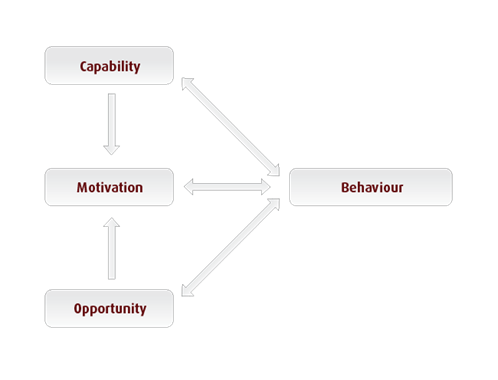Behaviour
Behaviour
Behaviour change in URTI consultations
Several models of behaviour change have been published that both support the development of effective interventions and assist clinicians in facilitating changes in behaviour in their patients, for example, in smoking cessation. The 2011 Michie behaviour change model is one example that is useful in helping understand the pathway for shaping and initiating behaviour change.12 The model is based on the COM-B system: capability, opportunity and motivation, adapted from the US criminal law system. The behaviour model details the skills required to perform the behaviour, a firm intention to perform the behaviour and no environmental constraints preventing the behaviour. All three aspects must be fulfilled for behaviour change to occur.12
Capability: Possessing the skills and know-how to engage in the required activity both physically and psychologically.
Motivation: The way your brain implements change, to include emotional responses, habitual processes, conscious decision-making and evidence-based decisions.
Opportunity: External factors that bring about change, such as environmental and social components.

Figure 2: The intersection of three
necessary conditions needed to achieve
behaviour change12
